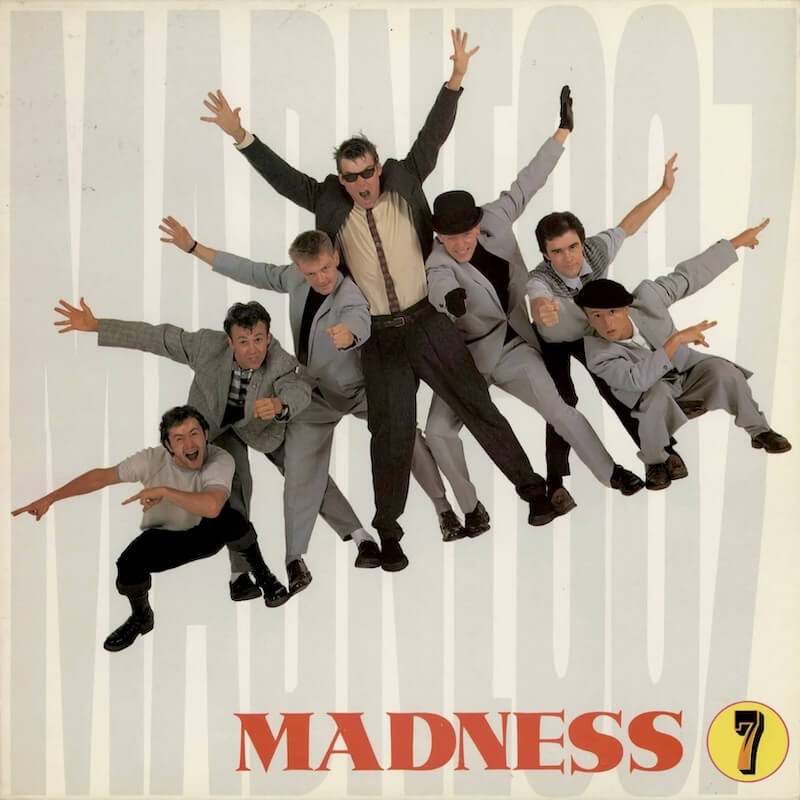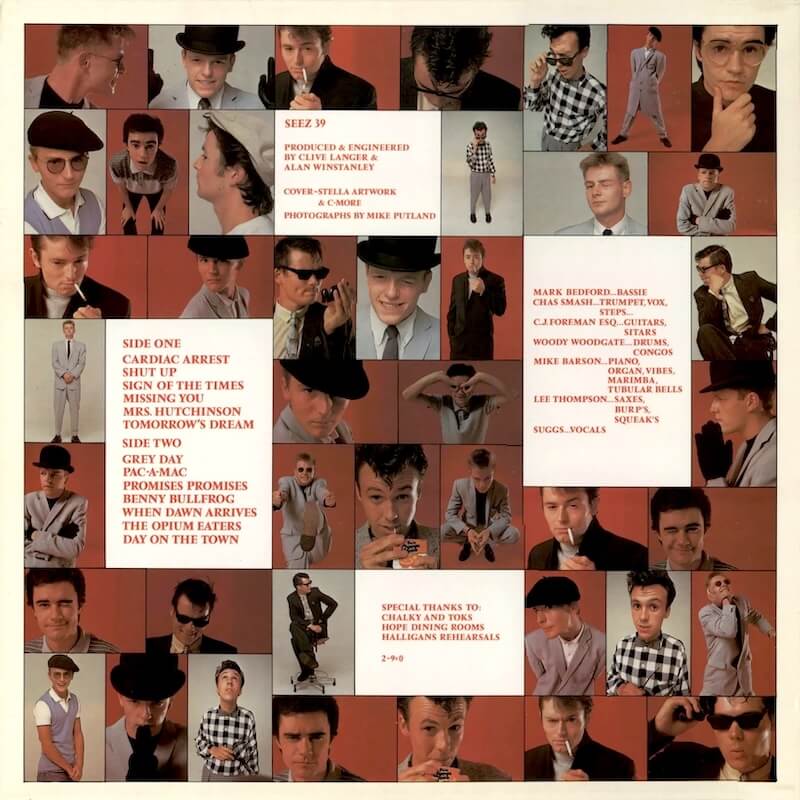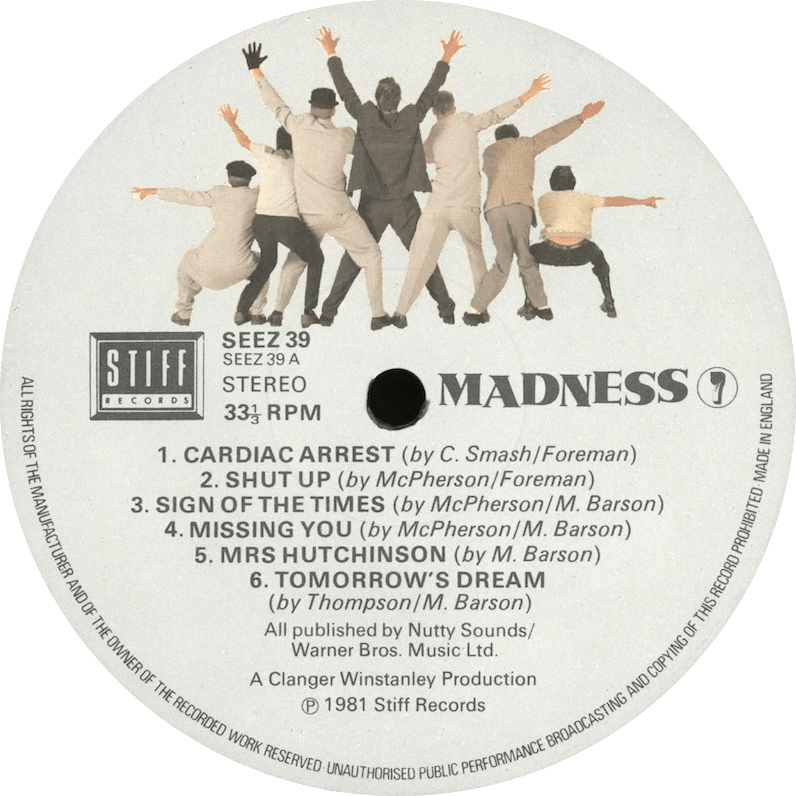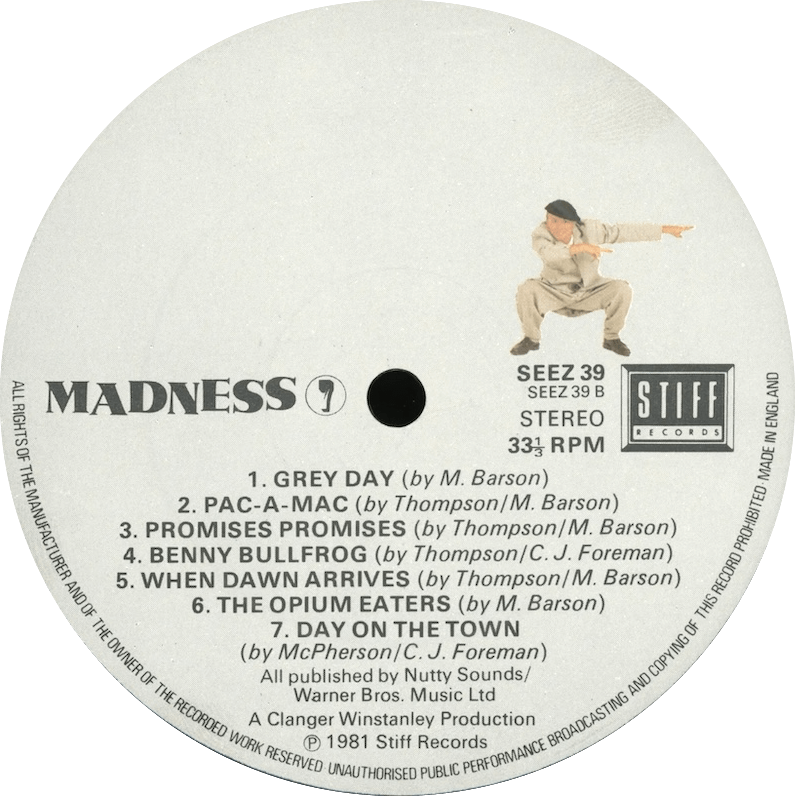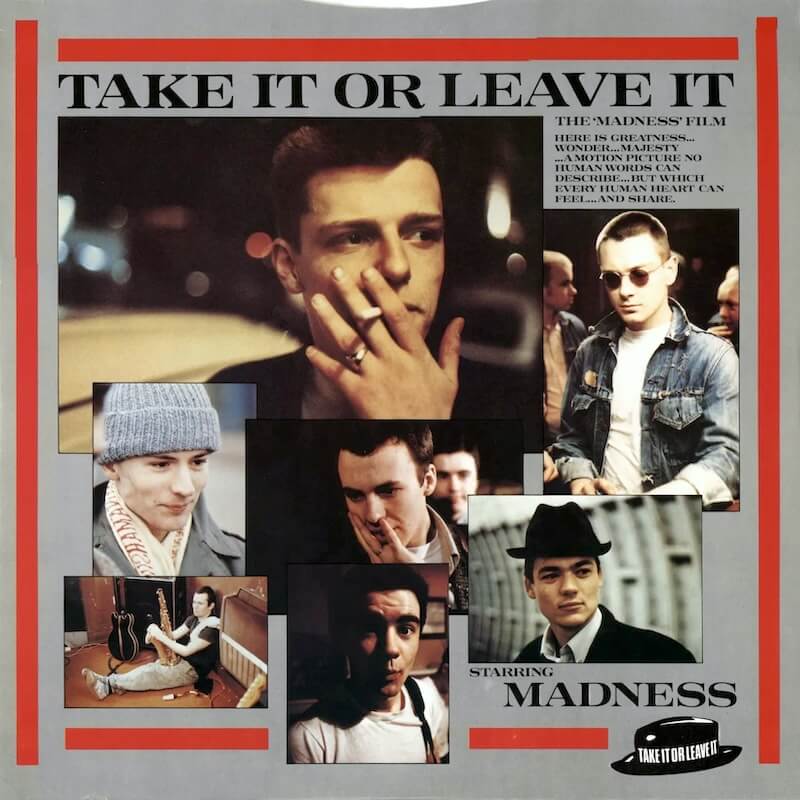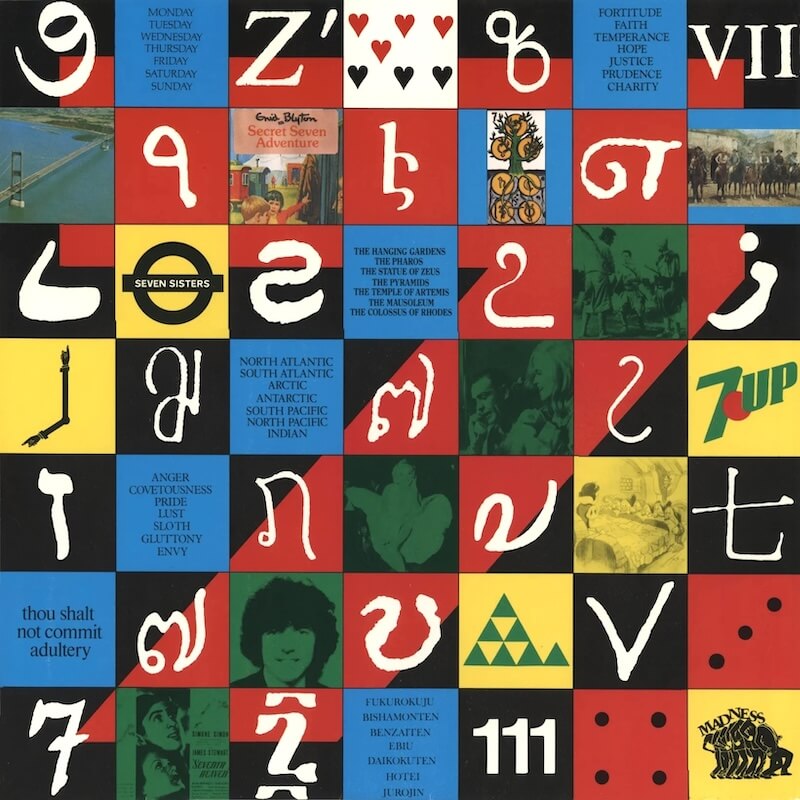
7
OVERVIEW
Madness’s third studio album, 7—often referred to as Madness 7—marked a turning point in the band’s artistic journey when it was released in October 1981. Riding high on the momentum of the ska revival sweeping across Britain, the album solidified their place not just as purveyors of the upbeat, danceable “nutty” sound, but as storytellers capable of blending humor, melancholy, and sharp social observation. Peaking at No. 5 on the UK Albums Chart, 7 captured the zeitgeist of early ‘80s Britain while continuing the band’s success following One Step Beyond… (1979) and Absolutely (1980).
Recorded primarily at Compass Point Studios in Nassau, Bahamas, the production of 7 brought a touch of tropical atmosphere to the band’s otherwise distinctly British sensibility. The sole exception, “Grey Day,” had been recorded earlier in London, and its somber tone and gritty realism contrasted sharply with the island setting where most of the album came together. Co-produced by Clive Langer and Alan Winstanley, both of whom had previously worked with other 2 Tone stalwarts like The Specials, the album benefited from a polished sound that reflected the band’s growing musical sophistication. Despite the sun-soaked locale, much of the album was later re-recorded back in London, a detail revealed in the band’s retrospective Guided Tour of Madness boxed set, adding a layered backstory to its creation.
Musically, 7 continued Madness’s fusion of ska rhythms and pop hooks, but with a noticeably darker and more introspective lyrical tilt. Tracks like “Cardiac Arrest” playfully yet grimly narrate the collapse of a man too consumed by routine to notice his declining health. It’s a brilliant example of the band’s ability to couch serious themes in deceptively jaunty arrangements. On the other hand, “Grey Day” strips away the whimsy, confronting listeners with a bleak, synth-heavy reflection on the drudgery of working-class life. The contrast between these two songs highlights the band’s evolving complexity—no longer just the jovial jesters of British pop, but thoughtful commentators as well.
Other songs, such as “Shut Up” and “Sign of the Times,” demonstrate this maturity further. Though still energetic and catchy, the tracks show a tightening of craft, both musically and lyrically, with a clearer focus on structure and thematic depth. It’s clear that by this point, Madness was less interested in simply entertaining and more intent on capturing the nuance of everyday British life, from the absurd to the sobering.
The album’s release saw several international variations. In countries like Belgium, the track “Day On The Town” was replaced by “Never Ask Twice” (also known as “Aeroplane” or “Airplane”) due to concerns about lyrical content. These substitutions underscore the band’s global appeal and the sometimes necessary adaptability of their work across different markets. Such differences in tracklisting also speak to the broader cultural perceptions of Madness and the ska genre at the time.
Critically, 7 has been acknowledged as one of Madness’s most important works. It’s often regarded as the moment when the band’s songwriting matured, offering a more balanced blend of humor and gravitas. Retrospective reviews praise its nuanced production and thematic boldness, with tracks like “Cardiac Arrest” frequently singled out as fan favorites. The 2010 reissue by Union Square Music further cemented the album’s legacy, with remastered audio, bonus tracks, and video content appealing to both new listeners and longtime fans. It was part of a broader effort by the band to reintroduce their catalog to a modern audience, a move that paid off in renewed appreciation for their early output.
In the grand tapestry of British pop and the 2 Tone movement, 7 stands as a key artifact. It captures Madness at a moment of creative peak—balancing the energy of ska with pop sophistication and reflective storytelling. The album’s ability to oscillate between irreverence and introspection makes it an enduring piece of music history. For those tracing the arc of Madness’s influence, 7 is more than just an album—it’s a snapshot of a band evolving in real time, capturing the madness of the world around them with wit, rhythm, and heart.
SINGLES
| Cover | Title | Released |
|---|---|---|
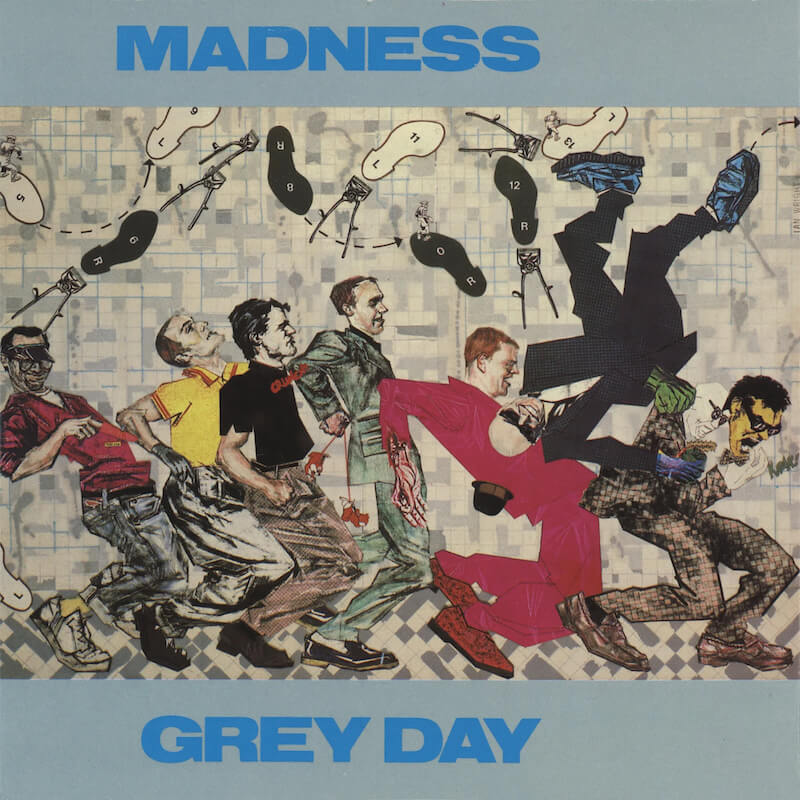 |
Grey Day | 04/17/1981 |
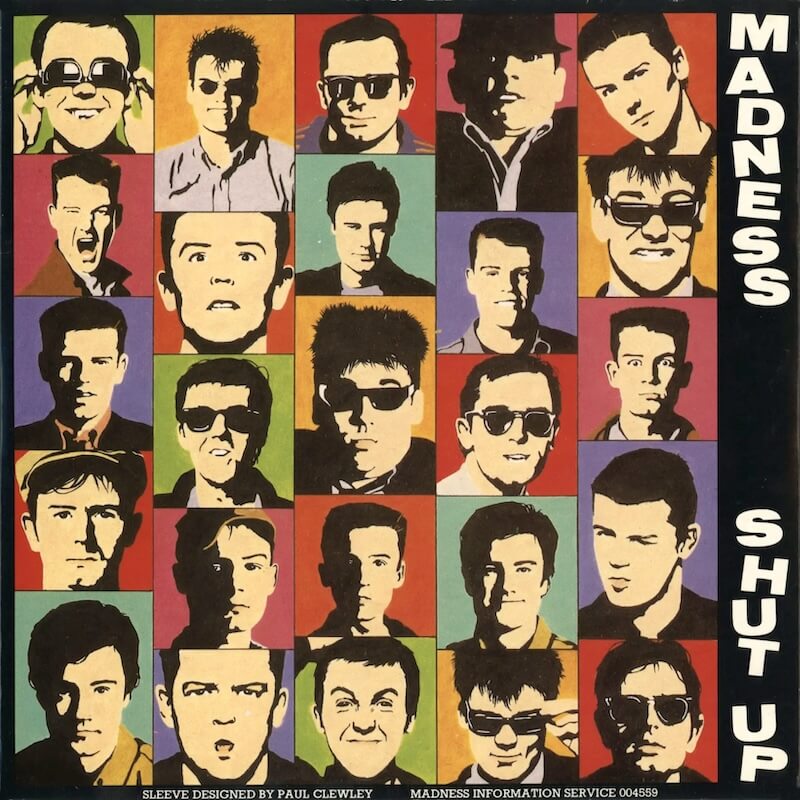 |
Shut Up | 09/11/1981 |
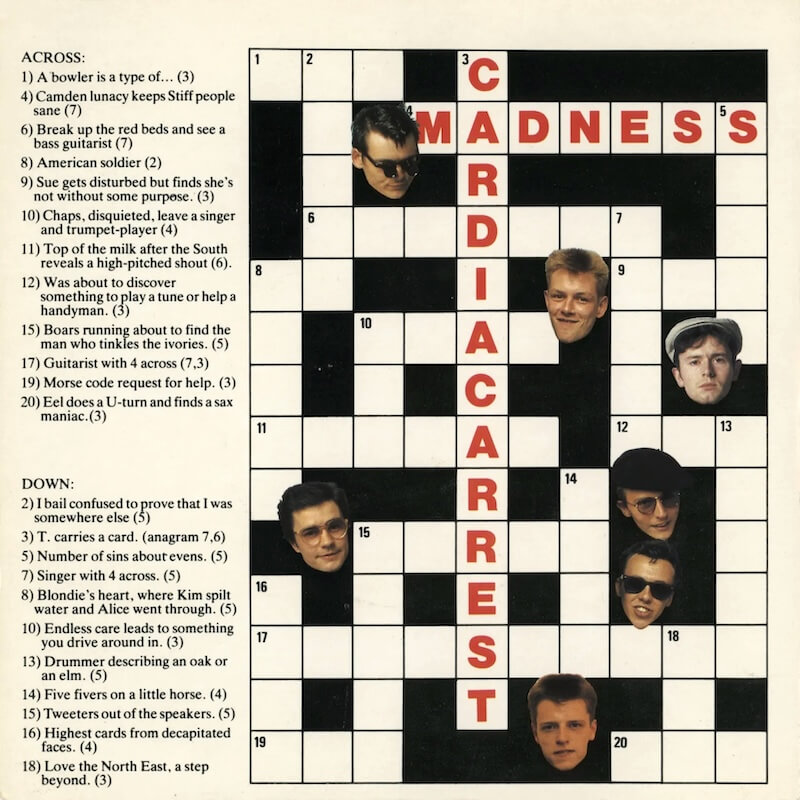 |
Cardiac Arrest | 02/12/1982 |
RELEASE DETAILS
TRACK LISTING
| Disc | Position | Track | Version | Duration |
|---|---|---|---|---|
| 1 | A1 | Cardiac Arrest | 2:52 | |
| 1 | A2 | Shut Up | 4:06 | |
| 1 | A3 | Sign Of The Times | 2:42 | |
| 1 | A4 | Missing You | 2:33 | |
| 1 | A5 | Mrs. Hutchinson | 2:17 | |
| 1 | A6 | Tomorrow's Dream | 3:54 | |
| 1 | B1 | Grey Day | 3:39 | |
| 1 | B2 | Pac-A-Mac | 2:37 | |
| 1 | B3 | Promises Promises | 2:52 | |
| 1 | B4 | Benny Bullfrog | 1:51 | |
| 1 | B5 | When Dawn Arrives | 2:42 | |
| 1 | B6 | The Opium Eaters | 3:02 | |
| 1 | B7 | Day On The Town | 3:22 |
CHART HISTORY
| Position Date | Position |
|---|---|
| 10/10/1981 | 9 |
| 17/10/1981 | 5 |
| 24/10/1981 | 7 |
| 31/10/1981 | 11 |
| 07/11/1981 | 11 |
| 14/11/1981 | 21 |
| 21/11/1981 | 25 |
| 28/11/1981 | 32 |
| 05/12/1981 | 32 |
| 12/12/1981 | 31 |
MUSICANS
| Musican | Instrument | Role | Credit |
|---|---|---|---|
| Mike Barson | Piano, Organ, Vibraphone, Marimba, Harmonica, Tubular Bells | Band | |
| Chris Foreman | Guitar, Sitar | Band | |
| Lee Thompson | Vocals, Burps and Squeaks, Saxophone | Band | |
| Mark Bedford | Bass | Band | |
| Daniel Woodgate | Drums, Congas | Band | |
| Graham McPherson | Vocals | Band | |
| Cathal Smyth | Vocals, Trumpet, Performer | Band |
PRODUCTION CREDITS
| Role | Credited | Notes |
|---|---|---|
| Producer | Clive Langer | |
| Producer, Engineer | Alan Winstanley | |
| Recording Studio | Compass Point Studio | |
| Photographer | Michael Putland | Photographs |
| Illustrator, Graphic Design | Chris Morton | C-More |
COPYRIGHT AND Licencing
| Ownership | Company | Notes |
|---|---|---|
| Copyright © | Stiff Records | |
| Phonographic Copyright ℗ | Stiff Records |
Representation
| Representation | Company | Notes |
|---|---|---|
| Record Label | Stiff Records | |
| Publisher | Nutty Sounds Ltd. | |
| Publisher | Warner Chappell Music Ltd. |
SHARE YOUR OWN RELEASE REVIEW WITH OUR COMMUNITY
References
Extensive efforts have been made to gather factual information and knowledge on madness from various sources and document them. These sources include publicly accessible websites, books and publications, historical artefacts, and other pertinent materials. As a result, a comprehensive index of resources has been compiled and integrated into the website. These resources, if relevant to this article, are listed below.
| Reference | Source |
|---|---|
| wikipedia.org | Website |
| discogs.com | Website |
| officialcharts.com | Website |

